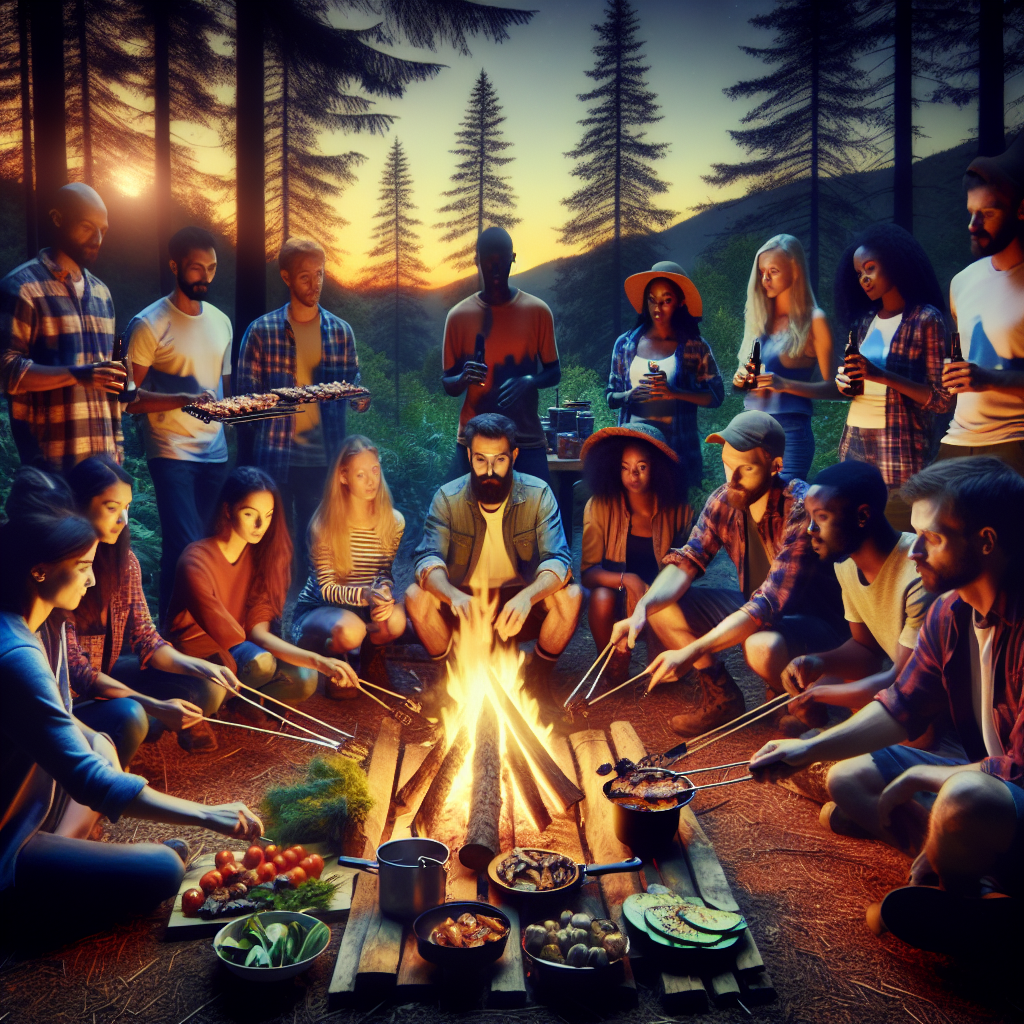Introduction
Imagine the sizzle of a freshly caught fish hitting a hot pan or the smell of stew simmering over an open flame. There’s something inherently joyful and satisfying about cooking in the wild, surrounded by nature’s beauty. But it’s not without its challenges. Mastering campfire culinary skills is crucial to turn outdoor cooking from a daunting task into an enjoyable and fulfilling experience. Let’s embark on a journey to elevate your campfire cooking game and ensure your next outdoor adventure is deliciously memorable.
Understanding Campfire Basics
Before you can become a campfire gourmet, it’s important to get the basics right. Not all campfires are created equal, especially when it comes to cooking. There’s the teepee, log cabin, and lean-to, each with its own merits. Selecting a safe, level spot away from overhanging branches, and keeping a water source nearby for emergencies is crucial. Remember, the goal is to leave the place as you found it, so always follow Leave No Trace principles, dousing your fire thoroughly before leaving and ensuring all embers are cold.
Essential Campfire Cooking Equipment
Navigating the wilderness requires lightweight, multi-purpose tools. A cast-iron skillet, pot, and a portable grate make for a good starting kit. Don’t forget a pair of sturdy tongs, a spatula, and a sharp knife, all wrapped securely to avoid accidents. When packing, consider using items that nest together to save space and always protect your cookware in a padded bag to prevent dings and scratches during transit.
Ingredients to Pack
Choosing the right ingredients is key to a mouth-watering campfire meal. Go for non-perishable items like rice, pasta, and canned goods for the base of your meals. Fresh produce should be sturdy—think potatoes, carrots, and apples. To keep them fresh, use insulated coolers with ice packs, and consider prepping meals ahead of time. Pre-marinated meats and pre-chopped veggies can save time and reduce the need for on-site preparation.
Campfire Cooking Techniques
Campfire cooking isn’t just about roasting marshmallows. Grilling, boiling, and even baking are all possible with the right techniques. Grilling requires a hot, open flame, while boiling is best done over a steady, less intense heat. Baking in the wild is a true art, involving creating an oven-like environment with coals and a tightly covered pot. Each technique has its steps, but the key is patience and careful heat management.
Recipes for the Wild
Outdoor cooking doesn’t have to mean sacrificing variety or flavor. Simple recipes like foil packet veggies, campfire chili, and skillet cornbread can be easy and satisfying. The trick is to adapt your recipes to the equipment and ingredients you have. Use a Dutch oven for slow-cooked stews, or skewer kebabs for a quick, flame-grilled dinner. The possibilities are endless—with a bit of creativity, you can enjoy gourmet meals under the stars.
Safety and Hygiene in Outdoor Cooking
Food safety is paramount in the wild. Always keep raw and cooked foods separate, and ensure meats are cooked to the proper temperature to avoid foodborne illnesses. Wash hands regularly with biodegradable soap, and clean utensils thoroughly after use. As for hygiene, designate different cutting boards for meats and veggies, and consider using paper towels to avoid cross-contamination with cloth towels.
Challenges of Outdoor Cooking and How to Overcome Them
Wind, rain, and uneven terrain are just a few challenges you might face while cooking outdoors. A windbreak can shield your flame from gusts, while a tarp overhead can keep the rain at bay. Always look for flat ground to set up your cooking station, or create a stable surface with rocks or logs. Remember, adaptability is key, and sometimes, the best solution is a simple one.
Engaging with Nature Through Food
Outdoor cooking is more than just a means to an end—it’s a way to engage with and appreciate your surroundings. Embrace local ingredients, whether it’s fish from a nearby stream or berries foraged along the trail. This not only adds a unique twist to your meals but also deepens your connection with the environment. Always forage responsibly, though, taking only what you need and respecting wildlife and plant life.
Conclusion
We’ve journeyed through the essentials of campfire culinary mastery, from understanding fire basics to embracing the local bounty. Remember, it’s not just about the food—it’s about the experience. So, take these skills, step out into the wild with confidence, and let the adventure of outdoor cooking begin. Respect nature, and it will reward you with not just sustenance, but a profound sense of connection and joy. Happy cooking, and may your campfire tales be as rich as the meals you craft!

